Ruth Asawa at David Zwirner, London
A Line Can Go Anywhere
runs until 22 /02
David Zwirner is pleased to announce an exhibition of work by
American artist Ruth Asawa at the gallery’s London location. This will
be the first major presentation of her work outside the United States
and will include a number of key forms spanning more than five decades
of the artist’s career, focusing in particular on the relationship
between Asawa’s wire sculptures and her wide-ranging body of works on
paper.
An influential artist, devoted activist, and tireless advocate for
arts education, Asawa is best known for her extensive body of hanging
wire sculptures. These intricate, dynamic, and sinuous works, begun in
the late 1940s, continue to challenge conventional notions of sculpture
through their emphasis on lightness and transparency. Relentlessly
experimental across a range of mediums, Asawa also produced numerous
drawings and prints that, like her wire sculptures, are built on simple,
repeated gestures that accumulate into complex compositions. Although
she moved between abstract and figurative registers in her sculptures
and drawings, respectively, viewed together, the works in this
exhibition nevertheless incite a rich dialogue and find commonality in
their sustained emphasis on the natural world and its forms, as well as
in their deft use of the basic aesthetic concept of the line. As she
noted, “I was interested in it because of the economy of a line, making
something in space, enclosing it without blocking it out. It’s still
transparent. I realized that if I was going to make these forms, which
interlock and interweave, it can only be done with a line because a line
can go anywhere.”1
The works on view include examples of Asawa’s well-known looped-wire
sculptures, which she began while still a student at Black Mountain
College. Their unique structure was inspired by Asawa's 1947 trip to
Mexico, during which a local craftsman taught her how to create baskets
out of wire. Suspended within the gallery space both in clusters and
individually, these works range from elaborate multi-lobed compositions
to nested shapes made from a single continuous length of wire, miniature
spheres, and open-window forms that require extreme technical dexterity
to achieve.
Presented alongside these will be Asawa’s tied-wire sculptures, a
body of work begun in 1962. After having been gifted a desert plant
whose branches split exponentially as they grew, Asawa quickly became
frustrated by her attempts to draw its structure. Instead, she utilised
industrial wire as a means of sculpting its form and, in doing so, was
able to create her signature abstractions.
Additional highlights include a rare work on paper inspired by
Asawa’s time at Black Mountain in which she used the ‘BMC’ laundry stamp
to create intricate and undulating compositions that derive from a
series of exercises assigned by Josef Albers in his Basic Design class.
Rather than emphasising technique, Albers pushed his students to focus
on—as he did in his own work—the articulation of form through colour by
asking them to limit themselves to a small number of basic shapes and
motifs. Likewise, Asawa’s spare but elegant drawings of plants and
flowers, made over the course of her life, echo this idea.
Also featured will be a group of vintage photographs of Asawa and
her work by noted photographer Imogen Cunningham (1883–1976), her close
friend and ardent supporter for more than two decades.
Born in rural California, American sculptor, educator, and arts activist Ruth Asawa
(1926–2013) was first exposed to professional artists while her family
and other Japanese Americans were detained at Santa Anita, California,
in 1942. Following her release from an internment camp in Rohwer,
Arkansas, eighteen months later, she enrolled in 1943 in Milwaukee State
Teachers College. Unable to receive her degree due to continued
hostility against Japanese Americans, Asawa left Milwaukee in 1946 to
study at Black Mountain College in North Carolina, then known for its
progressive pedagogical methods and avant-garde aesthetic environment.
Asawa’s time at Black Mountain proved formative in her development as an
artist, and she was particularly influenced by her teachers Josef
Albers, Buckminster Fuller, and the mathematician Max Dehn. She also met
architectural student Albert Lanier, whom she would marry in 1949 and
with whom she would raise a large family and build a career in San
Francisco. Asawa continued to produce art steadily over the course of
more than a half century, creating a cohesive body of sculptures and
works on paper that, in their innovative use of material and form,
deftly synthesises a wide range of aesthetic preoccupations at the heart
of twentieth-century abstraction.
Asawa’s work has been exhibited widely since the early 1950s,
including in early solo exhibitions at Peridot Gallery, New York in
1954, 1956, and 1958. In 1965, Walter Hopps organized a solo exhibition
of the artist’s sculptures and drawings at the Pasadena Art Museum (now
Norton Simon Museum) in California, where she completed a residency at
the Tamarind Lithography Workshop the same year. Other solo
presentations include those held at the San Francisco Museum of Art
(1973); Fresno Art Museum, California (traveled to Oakland Museum of
California; 2001–2002); de Young Museum, San Francisco (2006); Amon
Carter Museum of American Art, Fort Worth, Texas (2012); and Norton
Simon Museum of Art, Pasadena, California (2014).
In 2018–2019, the Pulitzer Arts Foundation in St. Louis presented Ruth Asawa: Life’s Work,
the first major museum exhibition of the artist’s work in more than a
decade. An accompanying catalogue published by Pulitzer Arts Foundation
and Yale University Press includes essays by Aruna D’Souza, Helen
Molesworth, and Tamara H. Schenkenberg. In May 2020, Ruth Asawa: Citizen of the Universewill
open at Modern Art Oxford, England, and will subsequently travel to the
Stavanger Kunstmuseum, Norway, the following October.
The artist’s works have also been included in significant group exhibitions, including Leap Before You Look: Black Mountain College 1933–1957,
Institute of Contemporary Art, Boston (2015; traveled to Hammer Museum,
Los Angeles, and Wexner Center for the Arts, Columbus, Ohio); America is Hard to See, Whitney Museum of American Art, New York (2107); Revolution in the Making: Abstract Sculpture by Women, 1947–2016, Hauser & Wirth, Los Angeles; Making Space: Women Artists and Postwar Abstraction, The Museum of Modern Art, New York (both 2017); The Pencil is a Key: Drawings by Incarcerated Artists, The Drawing Center, New York; and In a Cloud, in a Wall, in a Chair: Six Modernists in Mexico at Midcentury, Art Institute of Chicago (both 2019).
In addition to her wire sculptures, Asawa is well known for her
public commissions, particularly in San Francisco and the wider Bay
Area. These include the much beloved fountains in Ghirardelli Square
(1968) and outside the Grand Hyatt San Francisco (1973), the latter of
which includes hundreds of baker’s clay images molded by local
schoolchildren, friends, and other artists cast in bronze. Upon moving
to San Francisco in 1949, Asawa, a firm believer in the radical
potential of arts education from her time at Black Mountain College,
devoted herself to expanding access to art-focused educational programs.
She co-founded the Alvarado Arts Workshop in 1968 and was instrumental
in the opening of the first public arts high school in San Francisco in
1982, which was renamed the Ruth Asawa San Francisco School of the Arts
in her honor in 2010.
The artist’s work is represented in prominent museum collections,
including Crystal Bridges Museum of American Art, Bentonville, Arkansas;
Harvard Art Museums, Cambridge, Massachusetts; J. Paul Getty Museum,
Los Angeles; Los Angeles County Museum of Art; M.H. de Young Memorial
Museum, San Francisco; The Museum of Modern Art, New York; San Francisco
Museum of Modern Art; San Jose Museum of Art, California; Solomon R.
Guggenheim Museum, New York; and the Whitney Museum of American Art, New
York. Asawa has been the recipient of numerous prestigious awards.
The Estate of Ruth Asawa has been represented by David Zwirner since
2017. The gallery’s inaugural solo exhibition of the artist’s work took
place that same year in New York, and was accompanied by an extensive
publication that includes texts by Tiffany Bell and Robert Storr and
features an illustrated chronology.
Ruth Asawa
David Zwirner, 24 Grafton Street, W1S 4EZ London, England
Jan 10 - Feb 22, 2020
24 Grafton Street, W1S 4EZ London, England
Jan 10 - Feb 22, 2020
2020/01/22
Subscribe to:
Post Comments (Atom)
















































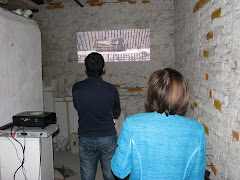














![exi[s]t>15 bulart](https://blogger.googleusercontent.com/img/b/R29vZ2xl/AVvXsEj67mt21mvAFC3VF_3QGzADB-5ZJJLBOlefD6Y8pi5z2e6HTMZztaHCi08vSOJ39mER-PcUmXUyHBnc-dMAq1t6MQe8reeNnIkyGKauFhd88y3NSvcsTLRlB1EdJQrefHryZQxK6-eDTvM/s240/buffet.jpg)
![exi[s]t>15 bulart](https://blogger.googleusercontent.com/img/b/R29vZ2xl/AVvXsEjuEe0w0gLW9nkOXAPGHqtkn89laZeWaQoLwvH2WVTEinKMw5RfqWwzcAkl1Ep27R6j1aYRF4BkiMX_juuZnGDNHyoHRCd65KHsXMg_Z_a3-tLG4OpCSHOlsj5hsPsh_htA6DEegu-Ubic/s240/P8250003.jpg)
![exi[s]t >15 bulart](https://blogger.googleusercontent.com/img/b/R29vZ2xl/AVvXsEg_O-oTzQ29LIVymZGSJUzpJCQYiu6VEztB6VkUPJmKb2VN5bRGpbURyj3-2M3Zz5JGtRjgwY_tr4qC-K21d5pKAzHZn9gYhbw2Vk7CPxb5unRin_828kpxYnzJbDa2Gkx6U1PFw2q1NDI/s150/P8250077.jpg)





















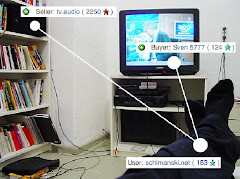














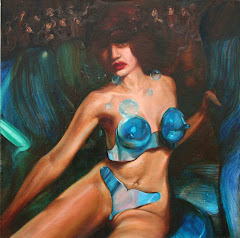
















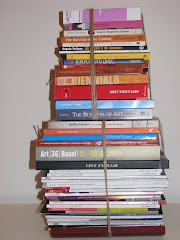




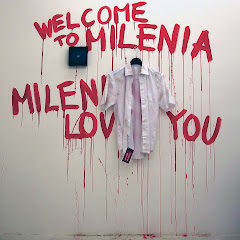

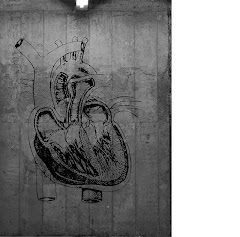







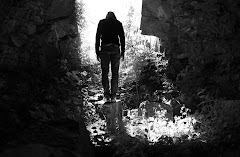



No comments:
Post a Comment